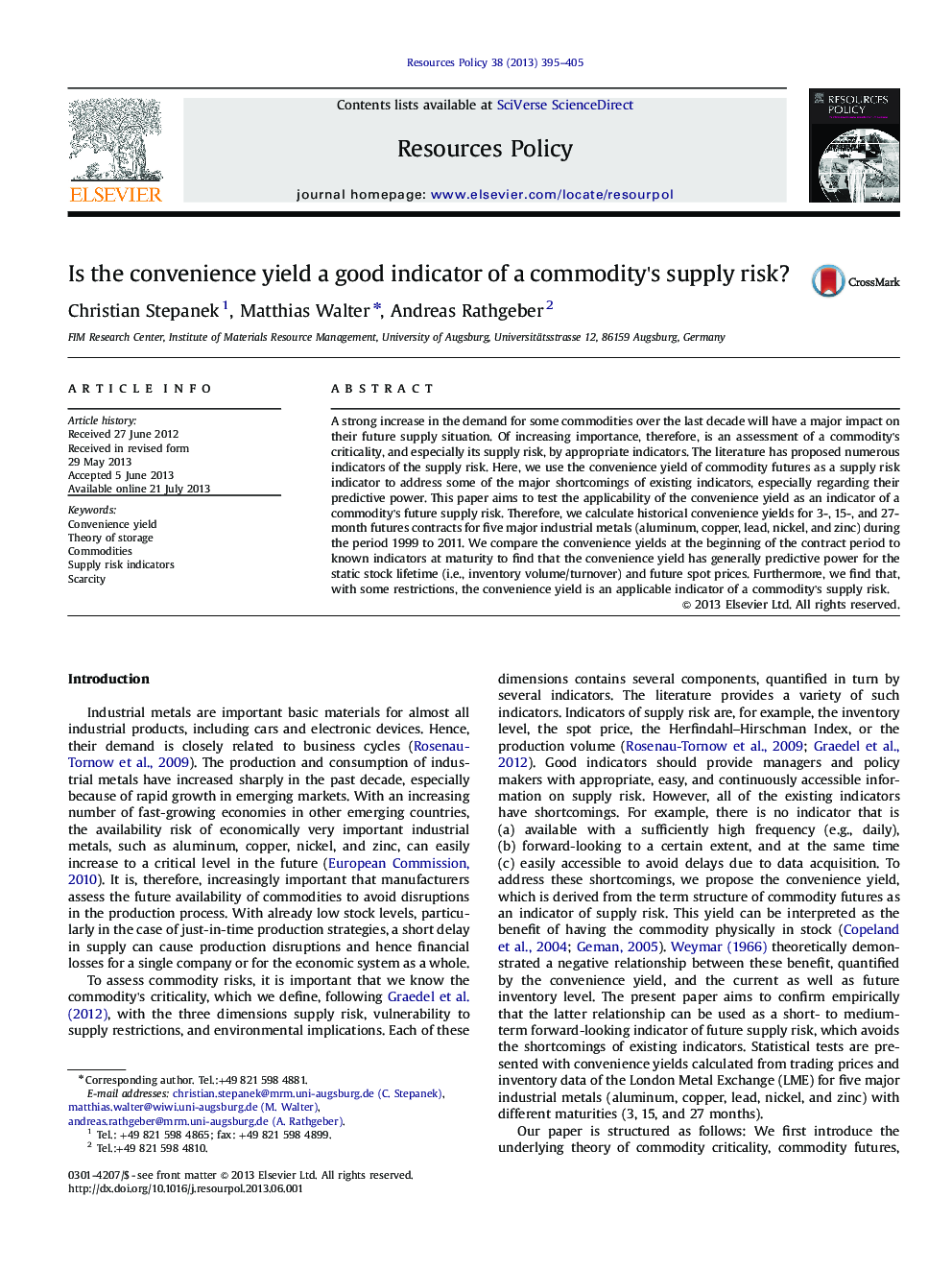| کد مقاله | کد نشریه | سال انتشار | مقاله انگلیسی | نسخه تمام متن |
|---|---|---|---|---|
| 986296 | 934846 | 2013 | 11 صفحه PDF | دانلود رایگان |
• We test the convenience yield's predictive power on a commodity's future supply risk.
• High convenience yields predict low static lifetimes for a commodity in the future.
• High convenience yields predict high spot prices in the future.
• Thus, the convenience yield is an applicable indicator of a commodity's supply risk.
A strong increase in the demand for some commodities over the last decade will have a major impact on their future supply situation. Of increasing importance, therefore, is an assessment of a commodity's criticality, and especially its supply risk, by appropriate indicators. The literature has proposed numerous indicators of the supply risk. Here, we use the convenience yield of commodity futures as a supply risk indicator to address some of the major shortcomings of existing indicators, especially regarding their predictive power. This paper aims to test the applicability of the convenience yield as an indicator of a commodity's future supply risk. Therefore, we calculate historical convenience yields for 3-, 15-, and 27-month futures contracts for five major industrial metals (aluminum, copper, lead, nickel, and zinc) during the period 1999 to 2011. We compare the convenience yields at the beginning of the contract period to known indicators at maturity to find that the convenience yield has generally predictive power for the static stock lifetime (i.e., inventory volume/turnover) and future spot prices. Furthermore, we find that, with some restrictions, the convenience yield is an applicable indicator of a commodity's supply risk.
Journal: Resources Policy - Volume 38, Issue 3, September 2013, Pages 395–405
